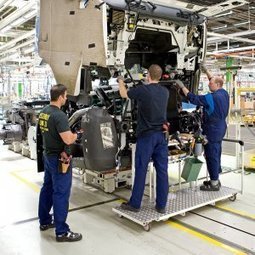Jun 13 2014
Pots of gold, Crutches, Mermaids, and Alligators
Kelvyn Youngman is a consultant from New Zealand, whose writings are usually easy to follow. This is why I was surprised by a post of his in the TLS-TOC Lean & Six Sigma discussion group on LinkedIn that I found unintelligible. The following quotes omits the parts in plain English, but there were too few for me to make sense of the whole:


 This is a translation of the bulk of
This is a translation of the bulk of
I surrendered, and confessed that I didn’t have a clue what he was talking about with clouds, crocodiles, pots of gold, UDEs, DEs, and Ds, and asked for help. The first response I received was from Henry Fitzhugh Camp:
It didn’t help much, but then, fortunately, he added:
He included a link to a video about Goldratt’s change matrix. Others also directed me to webinars, and debated whether there was rich knowledge embedded in the jargon, which prompted me to respond that yes, sometimes, technical terms do embed rich knowledge, for example in math or biochemistry. Often, however, the primary purpose of jargon is to exclude the uninitiated.
Some like to learn from webinars and videos. I don’t mind them for cooking recipes, but I find them an excruciatingly slow way to learn vocabulary. Clouds, crocodiles, pots of gold, UDEs, DEs, crutches and mermaids should be explained each in 25 words or less.
Lisa Scheinkopf then came to my rescue with explanations for at least some of these terms, which I summarized as follows:
As metaphors, Pot 0f Gold and Alligators are OK, but Crutches and Mermaids make no sense. A crutch is a device that helps you, not a risk. And I can’t see what mermaids have to do with the benefits of the status quo. In many cultures, mermaids, or sirens, lure sailors to their deaths. That is not much of a benefit. In others, they fall in love with human males, which makes you wonder what kind of “mermaids” a woman employee would have.
These terms are all about what you have to do to convince members of an organization to embrace a change you are recommending or have been tasked with implementing. In my experience, words are ineffective. To drive change, I have usually focused on finding protagonists rather than persuading antagonists.
Among the first-line managers in a manufacturing plant, for example, you usually encounter about 30% of antagonists who, for whatever reasons, oppose what you are recommending, about 50% of fence-sitters who are waiting to see which way the wind blows, and 20% of protagonists, who see an opportunity and want to take it. You work with the protagonists to get pilot projects done.
Their success then wins over the fence sitters and, together, the original protagonists and the converted fence sitters overcome the objections of the antagonists. Of course, this approach requires you to take human issues into consideration when selecting projects. You may select a smaller pot of gold because the manager in charge is ready to go for it.
And I still don’t know what Kelvyn meant with his “clouds.”